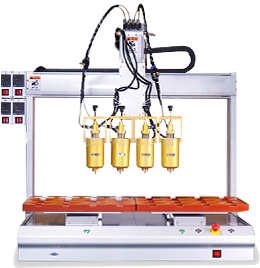-
CN
-
Service Hotline
+8618129931046 Mr. Liao




Key Technical Requirements (Adaptable to Cinema Screening Scenario)
1. High Stability and Long Battery Life
Cinema screenings often last over 10 hours, so the PCBA must be trouble-free for a long time:
Component Selection: Industrial-grade components (-40°C to 85°C operating temperature range) are preferred to prevent consumer-grade components from overheating and failing due to prolonged operation.
Example: The main control chip is the NXP i.MX6ULL (industrial grade, 800MHz main frequency, supports low-power mode, and can operate continuously without freezing), and the power chip is the TI TPS5430 (efficiency ≥90%, temperature rise ≤30°C).
Heat Dissipation Design: The PCB utilizes a "large copper area + heat dissipation vias" design, with heat sink soldering locations reserved for power modules (such as relay drivers and power converters) to ensure the PCBA is stable and reliable. Operating temperature ≤ 60°C (to avoid accelerated capacitor aging caused by high temperatures);
Low-power optimization: Automatically switches to standby mode during non-screening periods (such as cleaning and debugging), with static power consumption ≤ 1W, reducing long-term operating energy consumption.
2. Precise Audio and Video Synchronization
Audio and video synchronization is a core pain point for cinema viewing. PCBA requires hardware and software collaboration to ensure synchronization accuracy:
Synchronous signal processing: An integrated high-precision clock chip (such as the DS3231, with an accuracy of ±2ppm/year) provides a unified clock source for the audio and video modules, preventing synchronization errors caused by clock drift.
Delay control: The audio and video signal transmission paths utilize "equal-length wiring." For example, the differential line length error of the HDMI 2.1 interface is ≤5mm, ensuring that the time difference between the video and audio signals reaching the terminal device is ≤10ms (imperceptible to the human ear and eye).
3D projection synchronization: For 3D scenes, an integrated infrared synchronization module (such as the TI TPS61230 to drive infrared LEDs) sends synchronization signals to 3D glasses with a signal delay of ≤5ms to prevent image ghosting.
3. Multi-Device Compatibility and Communication
Cinema equipment brands vary (projectors, audio processors, and TMS systems all come from different manufacturers), so PCBAs must possess strong compatibility:
Multiple Interface Support: Rich integrated communication interfaces cover mainstream cinema connection methods:
Wired Interfaces: Gigabit Ethernet (RTL8211F, for interfacing with the TMS system), RS485 (for interfacing with screen/lighting controllers, transmission distance ≤ 1km), HDMI 2.1 (for interfacing with projectors, supporting 4K/120Hz video), GPIO (for controlling relays and turning lights on and off);
Wireless Interfaces: Bluetooth 5.0 (for debugging and local control), WiFi 6 (for backup communication to avoid wired disconnections);
Multi-Protocol Adaptation: Software-level support for commonly used cinema protocols, such as the XML/JSON data exchange protocol for TMS systems, the SNMP management protocol for projectors, and the Dolby CP850 control protocol for audio systems, ensures seamless communication between different devices.
4. Fault Redundancy and Emergency Response
Show interruptions directly impact the viewing experience, so the PCBA must be capable of responding to faults:
Key Module Redundancy: The power supply and communication modules utilize dual-path redundancy. For example, if the primary Ethernet port fails, the backup Ethernet port automatically switches (with a switchover time of ≤100ms). If the primary power chip fails, the backup power chip (such as the TI TPS5450) immediately takes over power.
Status Monitoring and Alarms: Real-time collection of PCBA core parameters (such as supply voltage, chip temperature, and communication link status) is performed. When a parameter exceeds a threshold (such as voltage below 9V or temperature above 70°C), an alarm message is immediately sent through the TMS system (e.g., SMS message, background pop-up window), and a local audible and visual alarm (integrated buzzer and LED indicator) is triggered.
Emergency Mode: If the TMS system is disconnected, the PCBA automatically activates "local emergency mode," reads the pre-stored screening schedule (stored in EEPROM), and resumes the screening, avoiding showtime interruptions.